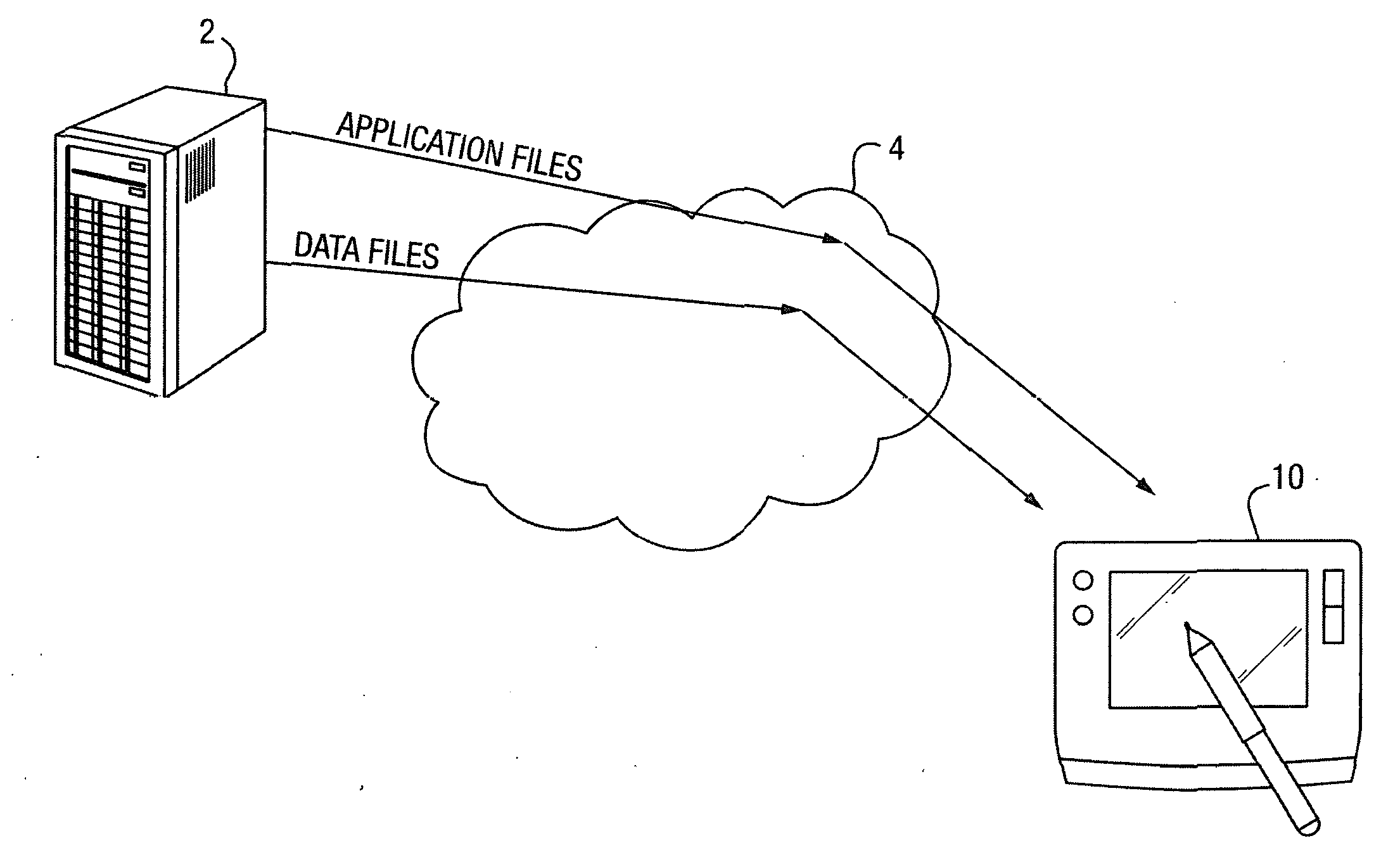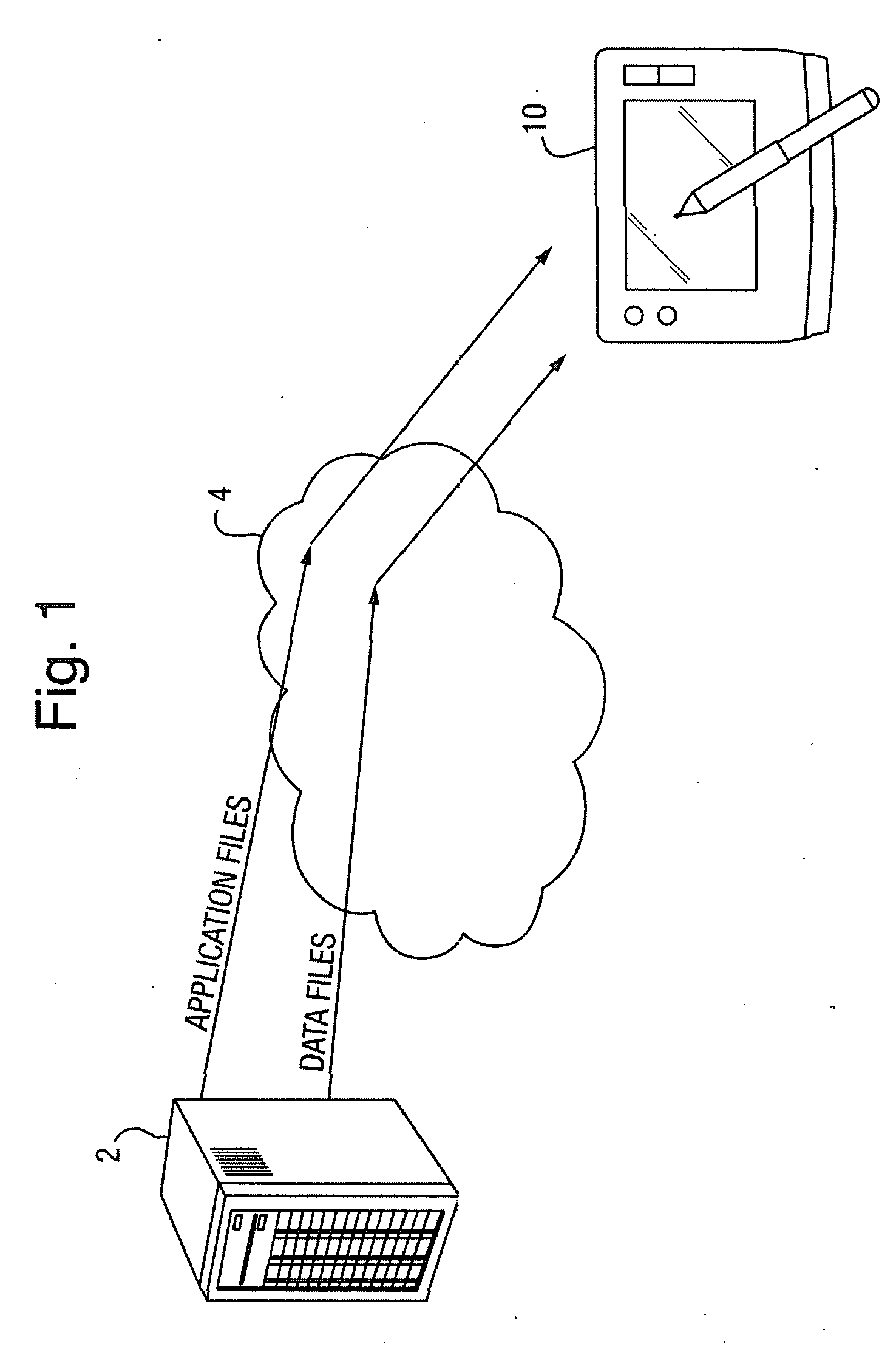Processing device and method of operation thereof
a processing device and a technology of a processing device, applied in the field of processing devices and a method of operation thereof, can solve the problems of complex systems required to track the change of policies, and achieve the effects of simplifying administration, reducing the risk of conflicts requiring complex resolution, and simplifying dealing
- Summary
- Abstract
- Description
- Claims
- Application Information
AI Technical Summary
Benefits of technology
Problems solved by technology
Method used
Image
Examples
Embodiment Construction
[0036]FIG. 1 gives a schematic overview of the general context of a first embodiment of the present invention. As shown, a corporate server 2 is in communication with a mobile device 10 over an unsecure network 2 such as the Internet. By means of this communication, the mobile device is able to download from the server 2 application files and data files (possibly as well as other kinds of files such as html files which may include a combination of data aspects and executable aspects, etc.—in addition the connection may permit other functions such as permitting voice and / or video calls to be made to the device from within a corporate intranet, etc.). In the present embodiment, controls are placed over the way in which such downloaded data and application files may be used by the device or the user of the device in order to enable security policies, specified by the corporation to which at least the server 2 belongs, to be adhered to.
[0037]Purely as an example, the sort of things that...
PUM
 Login to View More
Login to View More Abstract
Description
Claims
Application Information
 Login to View More
Login to View More - R&D
- Intellectual Property
- Life Sciences
- Materials
- Tech Scout
- Unparalleled Data Quality
- Higher Quality Content
- 60% Fewer Hallucinations
Browse by: Latest US Patents, China's latest patents, Technical Efficacy Thesaurus, Application Domain, Technology Topic, Popular Technical Reports.
© 2025 PatSnap. All rights reserved.Legal|Privacy policy|Modern Slavery Act Transparency Statement|Sitemap|About US| Contact US: help@patsnap.com



